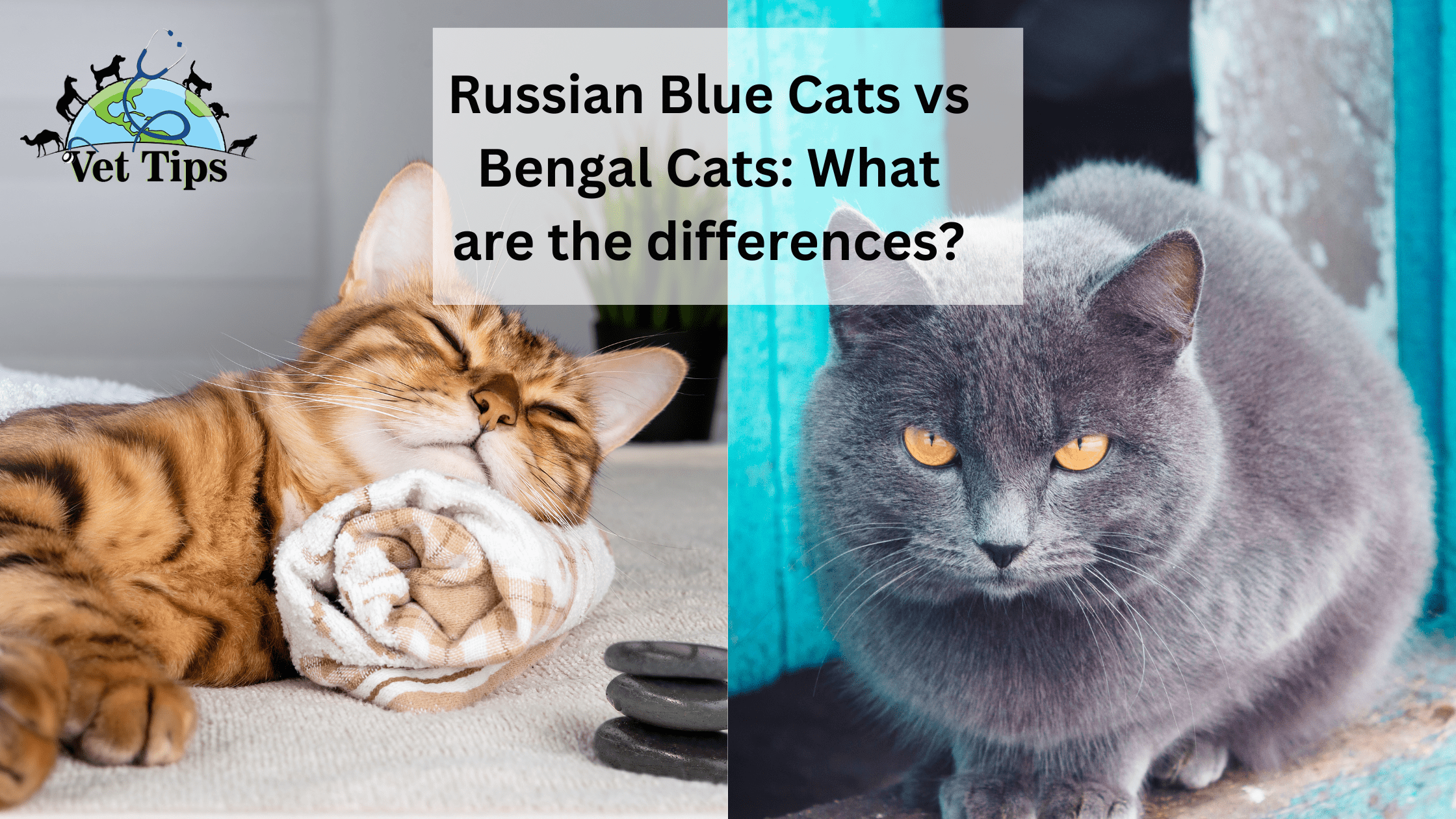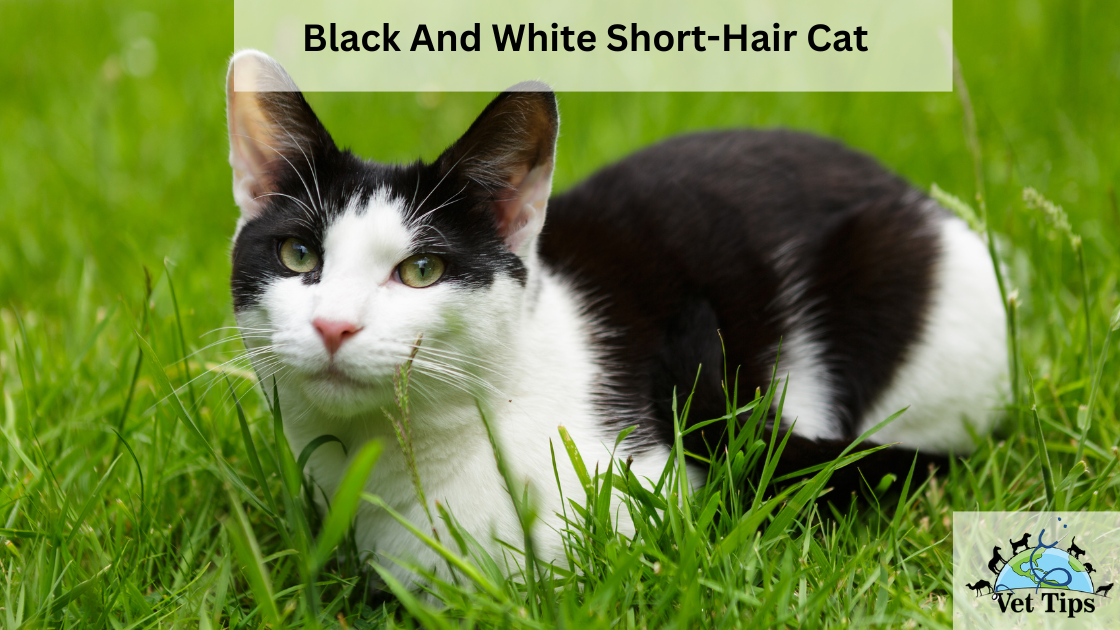In this article, we discuss all the features and characters of “Russian Blue Cats vs Bengal Cats: What are the differences?”. Continue reading to learn more about it.
Russian Blue Cats vs Bengal Cats
Every breed has its own set of advantages and disadvantages. Even though we adore all types of cats equally here, we find it helpful to compare different breeds from time to time. This may be done for various reasons, including selecting the best species to introduce new cats to your household or selecting a breed that will best suit your present lifestyle.
The most significant difference between these two breeds is their activity levels and how they prefer to play. While Russian Blue cats are known to be more autonomous and content to be there in your company, Bengals are known to be more of an attention-seeking cat breed. They enjoy interacting with their owners as well as with the other cats in the family. Russian Blue cats and Bengal cats are both extremely affectionate toward their owners. If you put out the necessary effort with either of these breeds, they will like to be in your company and want to participate in whatever you are doing!
In terms of litter box habits and hygiene, they are both highly tidy cats who take pleasure in keeping their litter box clean.
1. What is a Russian Blue Cat? Vs What is a Bengal Cat?
Russian Blue Cat
According to the breed’s name, this cat originates in Russia and has a blue coat. Even though the colour appears grey, blue is a particular term used to designate a specific colour in special cats. Blue is considered to be the dilute form of black in the pet world. Even though there are no exact dates for when this breed originated, it is a more ancient breed and one of the oldest acknowledged cat breeds to exist. This breed is well-known for its enthusiasm for fetching objects. The majorities of Russian blues make excellent family pets, get along well with other animals, including dogs, and are gentle with youngsters.

Bengal Cat
Bengal cats are attractive, intelligent, and have a rugged appearance. Because of its patterns and personalities, this hybrid cat breed is gaining in popularity, and it maintains a size comparable to that of a large domestic house cat. A domestic house cat such as an Abyssinian, Egyptian Mau, or American shorthair was crossed with an Asian leopard cat (Felis Bengalensis), from which the term “Bengal” was derived. The result was the development of the Bengal.

2. Russian Blue Cats vs Bengal Cats: History
The Russian Blue Cat History
Although the original origins of the Russian blue are unknown, these cats were formerly known as Archangel cats since they were brought ashore by ships from Russia’s Archangel Island or Arkhangelsk, respectively. This cat was a favourite of royalty, and it was also a favourite of the Russian czars.
These cats were transported to various locations throughout Europe. Russian blues were among the cats who competed in the first cat shows organised in England in the 1880s, and they were also among the winners. The Cat Fanciers’ Association of America and the International Cat Association in the United States of America are recognised by the Russian blue cat.
The Bengal Cat History
Generally speaking, a Bengal cat is regarded to be a hybrid breed. It is not uncommon for Bengals to be excluded from lists that ban exotic or giant cat breeds because they are smaller, are recognised as a pure breed by multiple other organisations, and have been bred regularly for at least three generations (the first three generations look and act the wildest). Bengal cats were no longer required to get a licence in the United Kingdom after the legislation was repealed in 2007.
3. Russian Blue Cats vs Bengal Cats: Physical Appearance
The Russian Blue Cat Appearance
The Russian blue cat is a medium-sized feline that is thin, robust, and muscular, with long legs. She can range in weight from 3 to 6 kilograms.
She has a beautiful blue, velvety double coat that is short and thick, and it is short and broad in places. The coat is a uniform shade of grey with silver points. The fact that this cat’s double coat doesn’t shed much is also an appealing characteristic. The cat’s head is triangular, and its eyes range from yellow to green in colour.
Temperament:
Her personality is that of a generous, sweet-tempered cat who enjoys nothing more than being in the company of her human companions. She is also calm and self-sufficient. They get along well with their human families, but they tend to build a strong attachment to one particular individual.
She will even accompany her owner everywhere she goes, and she is a caring and faithful buddy. The Russian Blue is a gregarious cat, yet she also appreciates some alone time relaxing and doing nothing. She is also not fond of visitors, and if the gathering grows too large and raucous, she may flee and seek refuge elsewhere.
This is a cat that will miss you if you are out at work for the entire day, but she is also capable of waiting patiently for your return. After that, she’ll be grateful for some playing.
The Bengal Cat Appearance
The beauty of the Bengal personality may be the only thing that may outshine the appeal of the Bengal personality. Bengals come in two basic pattern flows the spotted/rosetted and the marbled. While the brown spotted or rosetted tabby (which is reminiscent of a Leopard’s colour and pattern) is the most well-known colour and pattern, Bengals are available in two basic pattern flows: spotted/rosetted and the marbled. The marbled pattern appears more like an extended blur of a Clouded Leopard’s markings than anything else.
In addition to the wild look on a cute kitten caused by the characteristic tabby facial markings and huge oval, nocturnal eyes of this breed, many people are drawn to it. The strongly contrasting markings may be found on all Bengals, regardless of pattern or colour. They can also be found on the seal lynx point and black silver tabby, which have “snow leopard” like appearances. However, while most Bengals have green, yellow, or gold eyes, lynx points have blue eyes, and minks have aqua eyes.
Sparkle at the tips of some Bengals’ hairs evident when the light catches them is known as “glitter” in some circles. Bangladeshi Bengal cats have broad noses with substantial nose leather (the skin on the tip of the nostrils). Their muzzles are completed with prominent whisker pads, which are meant to replicate the appearance of a wildcat. Considering there are far too many colour and pattern combinations to list them all, it is safe to say that everyone will have a favourite, and there are enough variations to suit everyone’s taste.
Bengal Temperament
Bengal cat friends are often confident and dedicated to their owners. When appropriately introduced to other animals, they get along well with them and appreciate being a part of the family. Bengals are curious and athletic, and they retain their kitten-like energy and attitude long into their senior years. Bengals are lively and interactive. These friendly cats engage their humans in play, teach them tricks, teach them home rules, or like to be close to them for whatever reason. Some Bengals are naturally communicative, but others prefer to wait for the appropriate moment to interact with their owners. Many Bengal Cats have a strong love for water and will like watching you brush your teeth, while others will be eager to join you in the shower if you allow them.
4. Russian Blue Cats vs Bengal Cats: Care
The Russian Blue Cat
The Russian blue’s hallmark coat is a shimmering blue with a silvery tinge that is distinctive to the species. This cat’s short, dense, silky coat is effortless to care for, requiring only the essential grooming techniques. Its coat sheds very little as a result of its innate characteristics.
Perhaps even more remarkable than the Russian blue’s coat are its vast, almost spherical, wide-set, emerald-green eyes, which are set wide apart. The Russian blue’s head and face are shaped so that it appears to be continually smiling, lending it a delightful smile.
It is believed that Russian blues are intelligent cats. They are energetic and playful, and they may be taught to fetch if they are given the opportunity. Although they are not a talkative breed, they will typically answer when spoken to and encouraged to talk.
The Russian blue cat is a medium-sized cat with fine-boned, elegant, and slender features, but it is highly muscular. Make sure your cat has access to a scratching post so that it can get some much-needed stretching. This breed can keep itself engaged and exercising on its own, which is ideal for families who lead active lifestyles. Cat food quantities can be controlled to maintain a healthy weight. If your cat becomes overweight, lower the amount of food supplied to her and consult with your veterinarian.
The Bengal Cat
Because most Bengal cats today are several generations distant from the African leopard cat, they do not require any special attention. They are a larger version of the “house cat.” Grooming your cat weekly will assist in eliminating dead hair and reducing the likelihood of hairballs forming. If you don’t give a clean and fresh litter box, any cat will eventually refuse to use it since it smells terrible.
A climbing tree and possibilities for your Bengal cat to perch and observe the space are essential if you want to keep up with her. Provide your cat with engaging toys to keep her entertained. Take benefit of the opportunity to play together; you can teach your cat to retrieve and “capture the laser dot.”
Bengal cats are well-known for their fondness for water, a characteristic that is lacking in most domestic cats. You may have to exercise caution to prevent your aquarium from becoming a fishing pond.
The best way to care for a Bengal cat is to confine it to an indoor environment. This keeps them safe from contracting diseases from other animals, getting into conflicts, being attacked by predators, or being hit by cars, among other things.
5. Russian Blue Cats vs Bengal Cats: Health Issues
Russian Blue Cats
These cats are prone to a variety of health issues. Even though some purebred cats are predisposed to specific hereditary diseases, the Russian blue is generally healthy and has no known genetically related ailments.
The breed has a high life expectancy, with many other living breeds. Consult with your veterinarian to ensure that your Russian blue is up to date on all of its vaccinations, annual exams, routine tests, and dental treatment, among other things.
Considering that the Russian Blue cat is a naturally occurring breed, they are generally in good health. Keep an eye out for symptoms of obesity and urinary tract infections in your feline companion.
The Bengal Cat
Every vaccination and preventative health treatment that a domestic cat requires will be required for your Bengal cat as well. They do not have the same level of immunity to the feline leukaemia virus as their ALC ancestor did. Purebred cat breeds are more susceptible to genetic illnesses than mixed breed domestic cats because the gene population from which they descended was smaller in purebred cats.
Some of the conditions to which they may be predisposed are as follows:
• Autosomal recessive condition, which causes blindness in young cats at an early age2
• Feline infectious peritonitis, a life-threatening condition caused by a coronavirus infection in a cat’s stomach.
6. The Russian Blue Cats vs Bengal Cats: Diet and Nutrition
Russian Blue Cat
Whenever possible, it is recommended that you consult with your veterinarian on the finest food to provide your Russian blue. Because the Russian blue is known to be a voracious eater, one thing to keep an eye out for is overfeeding. Maintaining a healthy weight for your Russian blue is the most effective approach to avoid weight-related health problems, including diabetes, heart disease, and arthritis. Ensure that you feed your Russian blue cats measured portions of cat food at regular meal times, two to three times per day. However, while putting food out all day may be handy, it might lead to constant munching, resulting in a cat who is overweight. Make sure that freshwater is available 24 hours a day.
The Bengal Cat
Bengals consume the same thing as ordinary home cats: cat chow. However, making broad generalisations might be difficult. Many individuals prefer to offer their Bengals a grain-free or raw diet, especially if they are from the first three generations of the breed. For most Bengal owners, purchasing pre-formulated, grain-free food is the most convenient approach to meet their cat’s nutritional needs.
7. Russian Blue Cats vs Bengal Cats: Grooming
Russian Blue Cat
The Russian Blue’s lovely blue coat is short and thick, and it will benefit from a once-weekly brushing to maintain its appearance. During brushing time, the cat adores being the centre of attention.
Maintain the health of your Russian blue’s nails regularly.
Provide your cat with what he or she requires to live a happy and healthy life. A litter box, a collar and tag, a beautiful soft bed, grooming supplies, a climbing tree, and a scratching post are all required.
The Bengal Cat
Clean and trim your Bengal Cat’s nails regularly, and inspect the inside of her ears for dirt and debris once a week. You can clean out the ears with a cotton ball if you notice some debris inside them after using a gentle pet ear cleaner (never a cotton swab). If your Bengal’s ears appear inflamed or overly unclean, or if your Bengal Cat is tossing its head or scratching its ears, arrange an appointment with your veterinarian right once.
For similar posts like this, click here.
For the source file click here.




